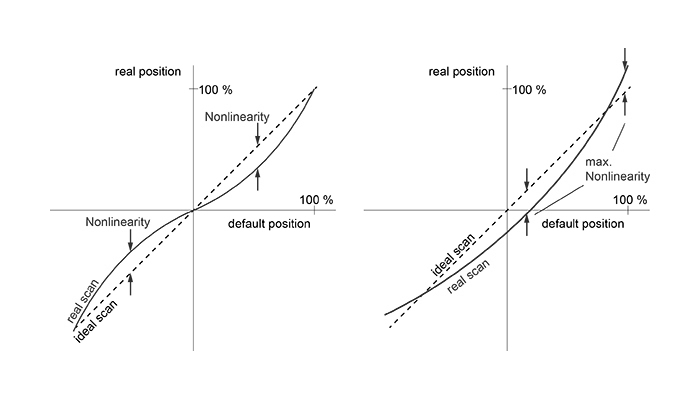Introduction
In our quest to make sound decisions, we often rely on mental models—frameworks that help us understand and navigate the complexities of the world. One such mental model is nonlinearity, which refers to the non-proportional relationship between cause and effect. By exploring the concept of nonlinearity, its relevance in decision-making processes, and its deep-rooted connection to human psychology, we can gain valuable insights into how our thinking can be distorted, leading to irrational decisions that defy our best interests.
Defining Nonlinearity and Its Relevance
Nonlinearity is a fundamental concept that describes situations where small changes in inputs can lead to disproportionately large outcomes, or where large changes in inputs can have negligible effects. It challenges the notion of linear cause-and-effect relationships and highlights the complex and unpredictable nature of many phenomena. Understanding nonlinearity is essential because it compels us to consider the dynamic and interconnected nature of our choices, rather than assuming a linear progression from cause to effect.
Nonlinearity in Everyday Life
Nonlinearity permeates various aspects of our lives, often without our conscious awareness. Let us examine three distinct examples that demonstrate the occurrence of nonlinearity in different contexts, shedding light on how individuals or groups can fall prey to this cognitive fallacy and make decisions contrary to their best interests.
- Personal Life Decisions: Consider the decision to pursue an advanced degree. Many individuals assume that obtaining a higher qualification will directly translate into a better career and increased earning potential. However, the relationship between education and success is nonlinear. While higher education can indeed open doors to new opportunities, the impact of a degree on career progression is influenced by multiple variables, such as market demand, networking, and practical skills. By solely focusing on linear expectations, individuals may overestimate the benefits of advanced degrees, potentially leading to excessive student loan debt and unmet career expectations.
- Business Scenarios: Nonlinearity can have significant implications for business decision-making. For instance, a company might increase its advertising budget with the expectation that it will result in proportionate revenue growth. However, in a competitive market with diminishing returns, additional ad spending may not yield the desired outcomes. The impact of advertising can be nonlinear, influenced by factors like market saturation, customer preferences, and the effectiveness of the campaign. Failure to recognize this nonlinearity can lead to poor resource allocation and suboptimal business strategies.
- Public Policy-Making: Nonlinearity also plays a role in the formulation of public policies. For instance, consider a policy aimed at reducing crime rates by increasing the severity of punishments. While it may seem logical that stricter penalties would deter potential offenders, the relationship between punishment and crime rates is nonlinear. Harsher penalties might not deter criminals significantly, as other factors like social conditions, education, and law enforcement effectiveness play crucial roles. Ignoring this nonlinearity may result in misguided policies that fail to address the root causes of crime effectively.
Mental Biases and Psychological Underpinnings of Nonlinearity
Nonlinearity is often reinforced by several mental biases and psychological tendencies that can distort our decision-making. One such bias is the availability heuristic, where we tend to rely on readily available examples or information rather than seeking a comprehensive understanding of the situation. This bias can cause us to overlook nonlinear relationships and focus on simplistic cause-and-effect narratives. Additionally, confirmation bias leads us to seek evidence that supports our pre-existing beliefs, reinforcing linear thinking and ignoring nonlinear nuances. Our preference for predictability and orderliness also contributes to our inclination towards linear models, as they provide a sense of control and certainty.
Furthermore, nonlinearity intersects with the concept of bounded rationality, which recognizes that our cognitive abilities are limited. We often resort to simplified mental models to make decisions efficiently, but these models fail to capture the full complexity of nonlinear relationships. As a result, we tend to oversimplify situations, assuming linearity where it does not exist.
Identifying and Avoiding Nonlinearity
Recognizing when we might be succumbing to nonlinearity is crucial to making more objective decisions. Here are a few strategies and tips to avoid this mental trap:
- Embrace complexity: Acknowledge that many phenomena are nonlinear and cannot be reduced to simple cause-and-effect relationships. Embrace the inherent complexity of the world and be open to exploring interconnected variables that influence outcomes.
- Seek diverse perspectives: Engage in active listening and seek out alternative viewpoints. Collaborate with others who have different expertise or backgrounds, as their insights may help identify nonlinear relationships that might otherwise be overlooked.
- Gather comprehensive data: Avoid relying solely on readily available information or personal anecdotes. Seek a broader range of data from reliable sources, including academic studies, empirical research, and expert opinions. This approach will help uncover nonlinear patterns and shed light on the complexities of the issue at hand.
- Test assumptions: Challenge your assumptions and test for nonlinearity. Look for evidence that supports both linear and nonlinear relationships, and consider the implications of each. This approach will help you develop a more nuanced understanding of the situation.
- Emphasize continuous learning: Stay curious and commit to ongoing learning. By continuously expanding your knowledge base, you will develop a more sophisticated understanding of nonlinearity and other mental models, enabling you to make more informed decisions.
Conclusion
Nonlinearity is a mental model that confronts our linear thinking biases and reminds us of the complexity inherent in the world. By understanding its relevance, recognizing its occurrence in various contexts, and acknowledging the psychological underpinnings that contribute to it, we can make better decisions. By actively avoiding the nonlinearity fallacy and employing strategies that embrace complexity, seek diverse perspectives, gather comprehensive data, test assumptions, and emphasize continuous learning, we can navigate the complexities of decision-making more effectively. Ultimately, awareness and active avoidance of nonlinearity can lead us toward more rational, informed choices that align with our best interests.
